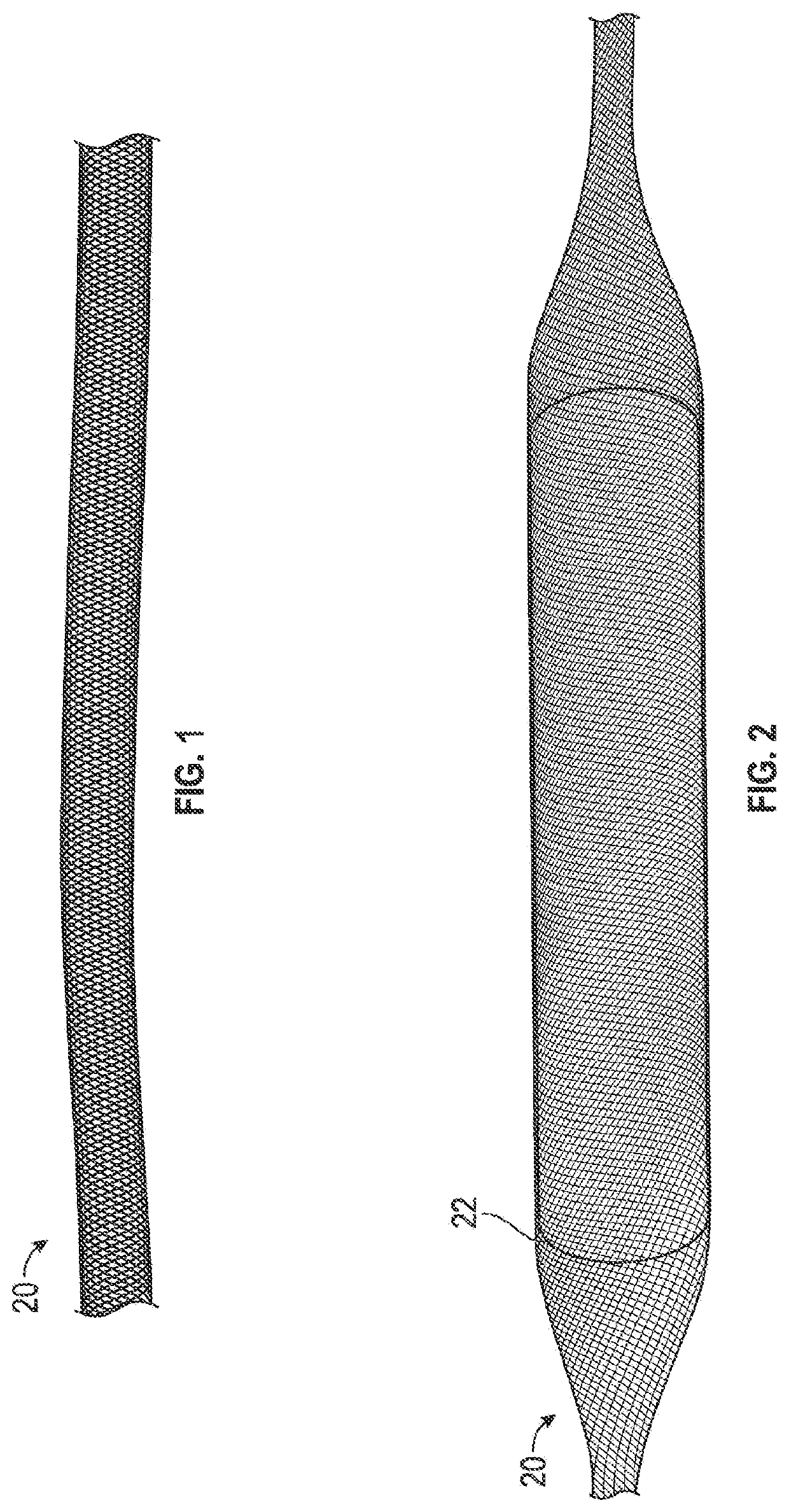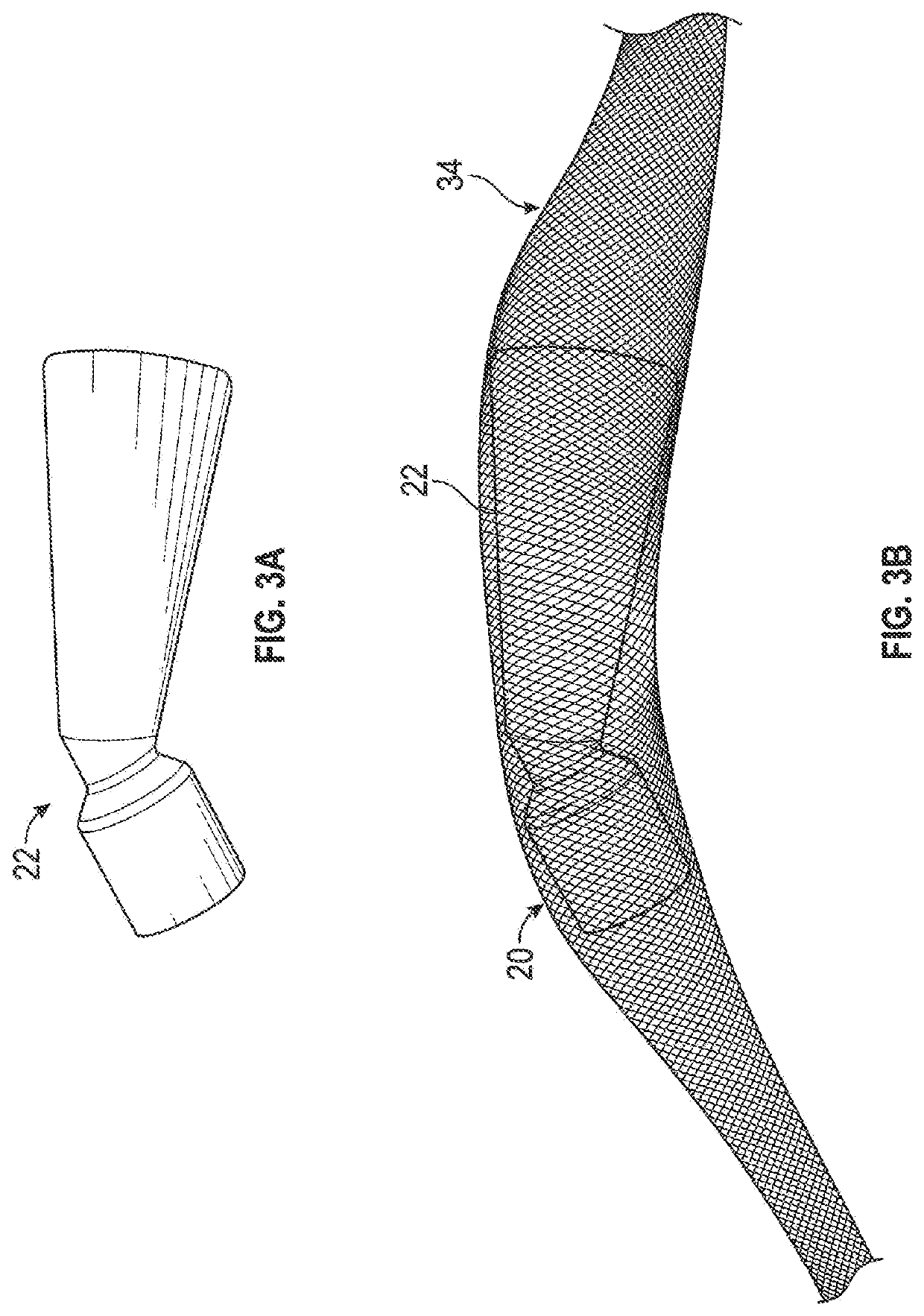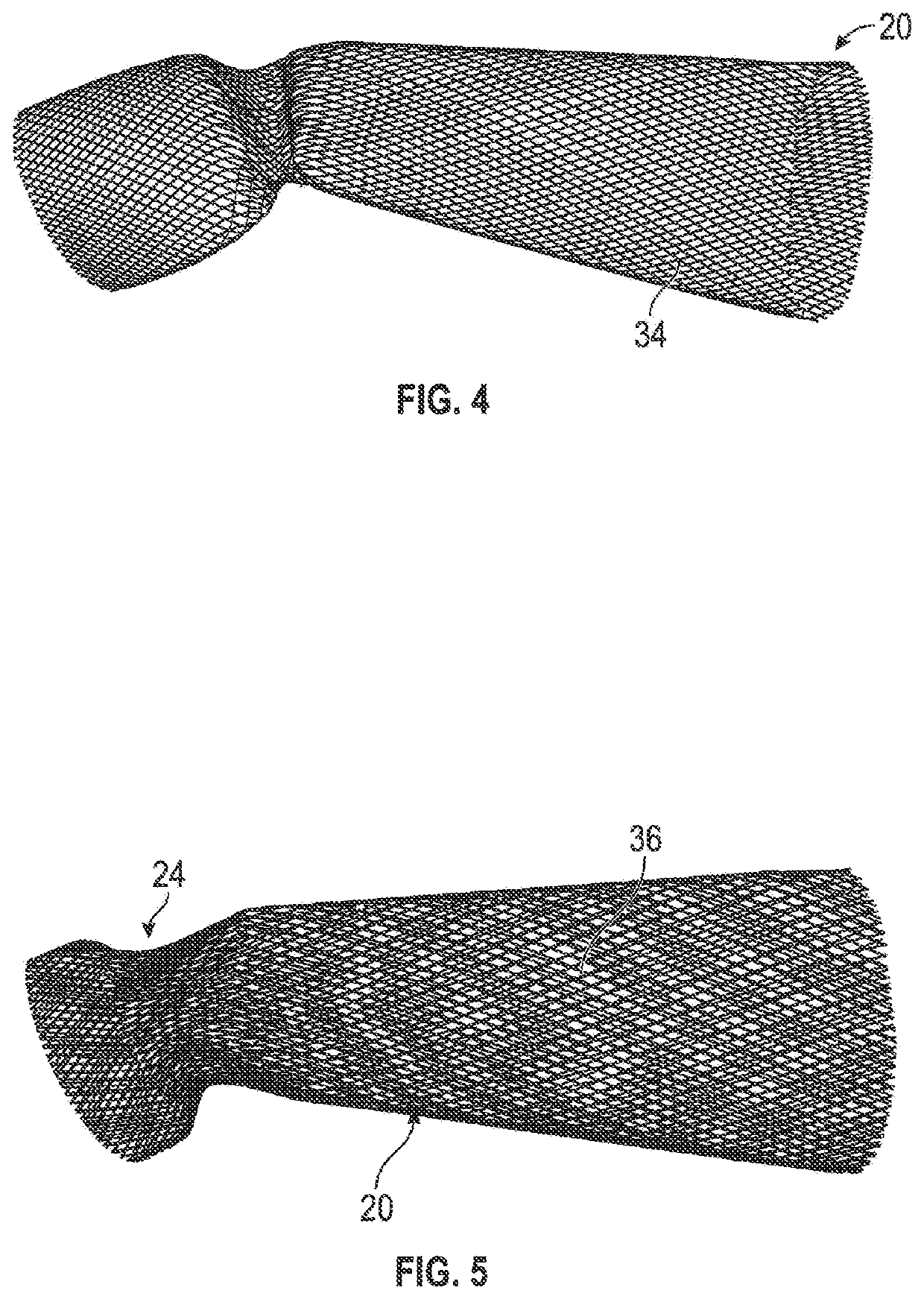Surgical tissue protection sheath
a tissue protection and surgical technology, applied in the field of surgical tissue protection sheaths, can solve the problems of surgical tools sliding friction, inability to protect tissue, and inability to flexibly elastomers,
- Summary
- Abstract
- Description
- Claims
- Application Information
AI Technical Summary
Benefits of technology
Problems solved by technology
Method used
Image
Examples
Embodiment Construction
[0051]FIG. 1 shows a braided tube 20 in its natural braided state. In FIG. 2 the braid is shown on a cylindrical mandrel 22 to demonstrate its tubular shape and ability to expand. The braided tube 20 can be drawn down to a smaller diameter by stretching and pulling the monofilaments into a more longitudinal alignment. Conversely, the braided tube 20 can be expanded to a larger diameter by compression and pushing the filaments into a more radial directed alignment.
[0052]The braided tube 20, especially if made of plastic, can be placed around a mandrel 22 that causes the braided tube 20 to expand to a specific diameter or shape. The braided tube 20 can then be heat set in an oven. Upon cooling the braided tube 20 will be permanently formed into the shape of the mandrel 22. Heat setting mandrels can be made of hollow or solid stainless steel, Delrin (acetal homopolymer resin). Mandrels 22 may be made of Teflon (fluoropolymer), especially if intended to coat the braided tube in a plasti...
PUM
 Login to View More
Login to View More Abstract
Description
Claims
Application Information
 Login to View More
Login to View More - R&D
- Intellectual Property
- Life Sciences
- Materials
- Tech Scout
- Unparalleled Data Quality
- Higher Quality Content
- 60% Fewer Hallucinations
Browse by: Latest US Patents, China's latest patents, Technical Efficacy Thesaurus, Application Domain, Technology Topic, Popular Technical Reports.
© 2025 PatSnap. All rights reserved.Legal|Privacy policy|Modern Slavery Act Transparency Statement|Sitemap|About US| Contact US: help@patsnap.com



